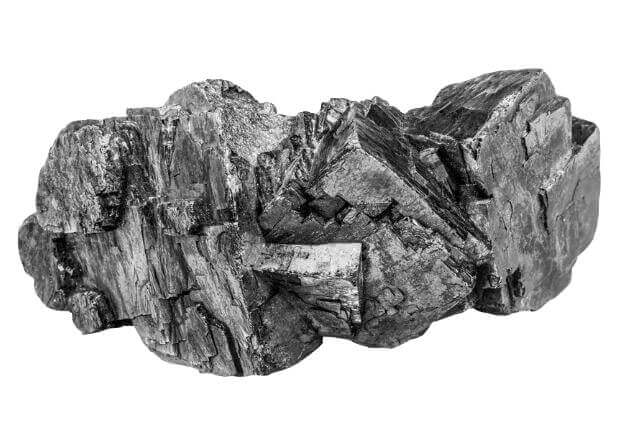Type
Element (Minerals/Ores of)
Mineral Classification
Arsenide
Chemical Formula
NiAs (Nickeline)
Streak
brownish black
Mohs Hardness
5-5.5


Type
Element (Minerals/Ores of)
Mineral Classification
Arsenide
Chemical Formula
NiAs (Nickeline)
Streak
brownish black
Mohs Hardness
5-5.5
Crystal System
Hexagonal
Color
Pale copper red with blackish tarnish. White with strong yellowish pink hue on polished section. Strongly anisotropic (directionally-dependent).
Luster
metallic
Fracture
conchoidal
Nickel (element #28, symbol Ni) is a silvery shiny, metallic element. It can be hammered into thin sheets, which means it is malleable. Nickel was discovered in 1751 by Axel Fredrik Cronstedt.
Iron, cobalt and nickel (numbers 26, 27 and 28 on the Periodic Table) are the only three elements known to be ferromagnetic (the strongest type of magnetism) above room temperature. Of the three, nickel is the least magnetic. When all three ferromagnetic metals are alloyed together in combination with some additional elements, an unusually strong magnet, called an alnico magnet, is created. This alloy also conducts heat and electricity fairly well. Alnico magnets are the only magnets that have useful magnetism when heated red hot.
Nickel is usually found in laterite deposits, which are deposits in which strong weathering leaches nickel-rich rock and concentrates nickel at or near the surface of the earth. Nickel sulfide deposits provide the rest. Demand for nickel in the United States is much higher than what recycled nickel can provide, so nickel is imported from Canada, Norway, Russia, Australia and other countries.
The United States had only one active nickel mine in 2013. There are also small amounts of by-product nickel recovered from copper and palladium-platinum ores in the Western United States.
More than 80,000 tons of nickel is recovered annually by recycling stainless steel and other nickel-iron alloys. This represents about 40% of the nickel used each year.
It is estimated that there are about 140 million tons of nickel available in identified deposits. Eighty-four million tons, or 60 percent of the total available nickel is in laterite deposits. A deposit in which rain and surface water leached nickel-rich rock and concentrated the nickel at or near the surface of the Earth is a laterite deposit. Nickel sulfide deposits contain the remaining forty percent (56 million tons).
Demand for nickel in the United States is much higher than what recycled nickel can provide, so nickel is imported into the country. Most of the imported nickel comes from Canada, 34%; Russia, 16%; Australia, 11%; Norway, 10%; and other countries, 29%.
In the U.S., large amounts of nickel are used in the specialty steel industry for stainless steel and related alloys. Stainless steel also contains some molybdenum, titanium and nickel, to increase its resistance to corrosion. Nickel is used as a coating on other metals to slow down corrosion.
Nickel is also used for a variety of purposes including the production of coins, nickel-cadmium and nickel-metal hydride batteries; as a catalyst for certain chemical reactions; and, as a colorant, nickel is added to glass to give it a green color.
If you have some questions about our products, please feel free to fill out the form below, and we will contact you within 24 hours. Rest assured that we won’t reveal your information to anyone.